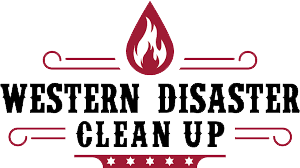If you’ve endured a house fire that left behind stubborn smoke damage, you’re probably wondering what items are salvageable and which should be tossed.
A house fire can permanently alter the course of your life. You’ll never forget the despair and desperation you felt the first time you noticed the flames and the subsequent aftermath.
Rebuilding your life after a house fire is tough, regardless of its size or time of day. The good news is that many of your items might be salvageable. Continue reading to learn more about smoke damage and recovering from a fire.
Type of Fire Damage
Fire damage shows itself instantly during a house fire. Although fire destroys almost anything it touches immediately, it also burns out just as fast. Unlike other forms of damage, once the flames are out, you don’t have to worry about residual destruction affecting your possessions for days or even months later. There are three main types of fire damage– flame, extinguishing, and smoke damage:
- Flame damage – Obviously, fire destroys material; if something flammable in your home is too close to the flames, the fire will consume it. This poses a serious issue for materials like linen and wood. If your clothing or furnishings catch fire, it won’t be long before a pile of ash remains in their place.
- Extinguishing damage – The act of extinguishing the fire can also damage your home. One example is the excessive amount of water firefighters use to help combat the flames. This can be absorbed in your floors and walls, causing them to swell, warp, and rot. Additionally, chemicals used during extinguishing will need to be cleaned by a professional to remove any potential hazards.
- Smoke damage – Smoke damage in a house can hang around for months after a fire has been put out. If you’ve ever been around a campfire, you understand how smoke tends to stick to objects. The same is true for your home after a fire strikes– the smoke will create a smelly and sticky layer and cause discoloration to the surfaces of your home. Fortunately, cleaning up smoke damage is possible.
- Furniture
Some furniture destroyed in a fire’s path might be salvageable, depending on the material. For instance, hardwood furniture that has been fully dried and shows no signs of mold development can still be used.
On the other hand, severely wet upholstered furniture is typically beyond repair, especially if there are any indications of mold. Delaminated furniture should also be thrown out because it’s difficult to dry the pressed wood underneath the laminate after it has absorbed water.
- Hardwood Flooring
Smoke damage in a house often pertains largely to the floors. Even though wood is a porous substance, you can nearly always salvage hardwood floors after a fire. Flame damage, such as charring or burn marks, is the exception.
First, it’s crucial to effectively dry the floors if they become wet during the fire’s suppression to prevent cracking or warping. The best option to repair your damaged wood floors after a fire is to get in touch with a reputable restoration business in your area.
- Glass and Ceramics
Glass and porcelain items are typically much simpler to preserve than fabrics and wood. Your glass possessions will likely only sustain a sooty coating following a small house fire. Ceramics, however, can be porous and may be subject to stains from hard water and smoke damage.
Glass may be cleaned by washing it in a solution of vinegar and dish soap, while ceramics may warrant a more thorough smoke damage cleaning process. If anything made of glass or ceramic is melted or fractured by the heat of the fire, it will probably be necessary to throw it away.
- Jewelry and Other Valuable Metals
While the alloys used to produce jewelry can melt at high temperatures and permanently harm your pieces, pure gold and silver do not burn. Most of the time, they should be safe to clean up and maintain if they are not damaged by melted metal. While metals may tarnish, they frequently have high fire resistance. You can use baking soda, vinegar, and dish soap on your metals in your smoke damage cleaning process.
What to Throw Away After a Fire
While some smoke damage in a house can be alleviated, sometimes it’s necessary to toss the item altogether.
Here is a quick list of items that should be thrown away post-fire damage:
- Plastics – Plastic objects rapidly draw in smoke and soot, making them an easy target in a fire. Afterward, plastics should always be discarded because it is impossible to remove these stains.
- Food – You should discard any expired food in your freezer or refrigerator after a power outage. While food spoils in freezers in 12 to 24 hours, it takes two to six hours for food to degrade in your refrigerator. If the fire reached your fridge, regardless of whether the electricity went out, throw away everything.
- Medicines and cosmetics – Make sure to discard any medications, cosmetics, and personal care items that have been harmed by the fire. Although costly, it’s best to presume that these objects were polluted by smoke and soot after a fire. If you throw away prescription medication, call your doctor right away for a refill.
Let Western Disaster Cleanup Help
If your home has suffered smoke damage from a fire, you need Western Disaster Cleanup on your side. We understand what it takes to recover from significant disasters such as fire and water damage. We enjoy assisting folks by handling their disaster cleanup in a flash. We understand how difficult it can be to pick up the pieces; therefore, we strive to maintain high job quality and good customer service. We have someone on call 24 hours a day, seven days a week.
Contact us right away if you require assistance. We are located in Orem, Utah, and we service all of northern Utah.

